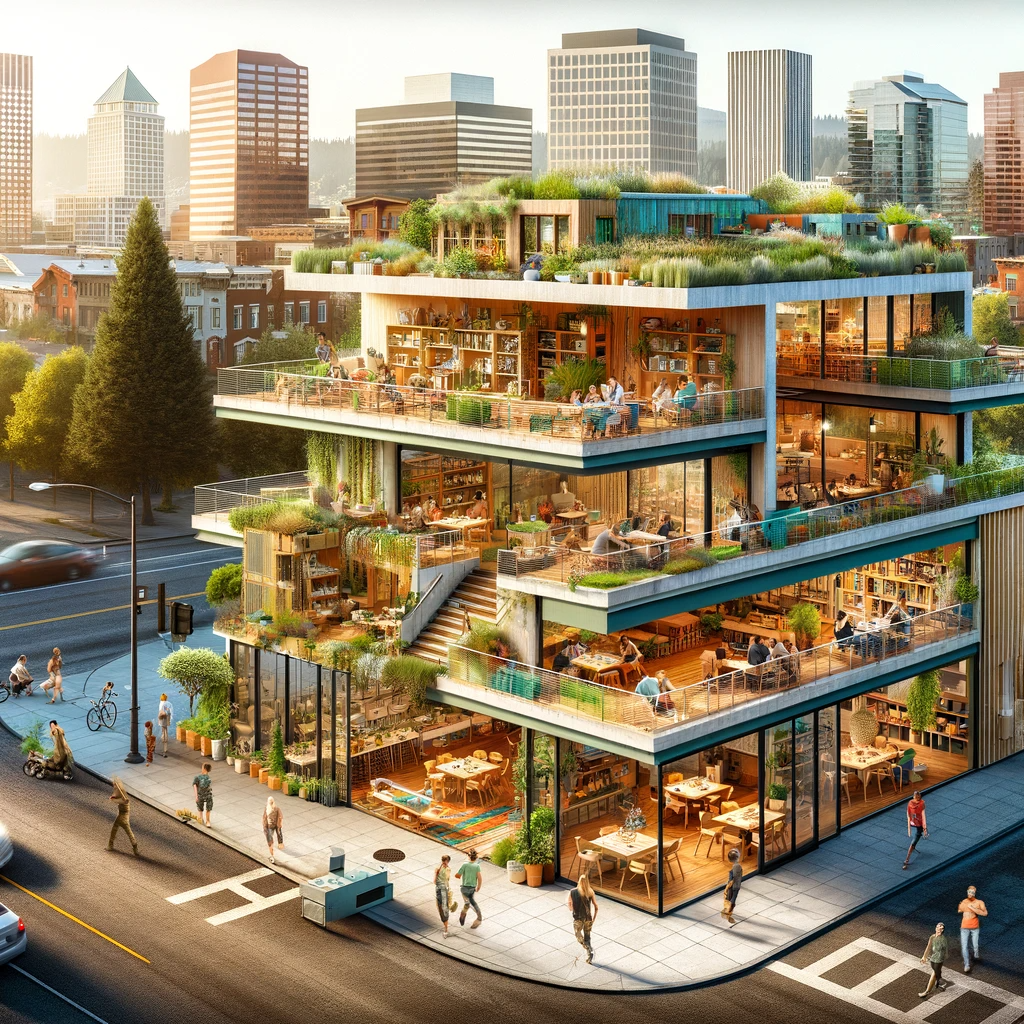In the vibrant and ever-evolving city of Portland, a new trend is reshaping the concept of home and community: co-living spaces. As a city known for its progressive values, environmental consciousness, and creative community, Portland is the perfect breeding ground for this innovative living arrangement. Co-living, a modern form of communal living where residents share living spaces, resources, and sometimes even meals, is gaining traction among urbanites seeking affordability, sustainability, and a sense of community. Let’s explore the rise of co-living spaces in Portland and what it means for the future of urban living.
The Appeal of Co-Living
Co-living appeals to a wide range of individuals, from young professionals and digital nomads to artists and retirees. The reasons for its growing popularity are as diverse as its residents:
- Affordability: With the cost of living and housing prices continually rising, co-living offers a more affordable alternative to traditional apartments or homes. By sharing spaces and resources, residents can save on rent, utilities, and other living expenses.
- Community: In an increasingly digital and isolated world, co-living spaces provide a built-in community. Residents often share common areas, participate in organized events, and sometimes even collaborate on projects, fostering a sense of belonging and mutual support.
- Sustainability: Co-living is inherently more sustainable than traditional living arrangements. Sharing resources reduces waste, energy consumption, and the overall environmental footprint of each resident.
- Flexibility: Many co-living spaces offer flexible lease terms, making them an attractive option for those who value mobility and freedom. This is particularly appealing to freelancers, remote workers, and anyone who isn’t tied to a specific location.
The Co-Living Scene in Portland
Portland’s co-living scene is as eclectic and diverse as the city itself. From historic homes converted into communal living spaces to modern, purpose-built co-living developments, there’s something for everyone. Here are some of the ways co-living is manifesting in Portland:
- Historic Communal Houses: Some of Portland’s older homes have been transformed into co-living spaces, offering a blend of historic charm and modern communal living. These houses often feature shared kitchens, communal living areas, and private bedrooms, with a focus on creating a tight-knit community among residents.
- Modern Co-Living Developments: Newer co-living developments in Portland are designed with communal living in mind. These spaces often feature a mix of private and shared units, with amenities like coworking spaces, communal dining areas, and even urban gardens.
- Co-Living for Creatives: Portland, with its thriving arts and culture scene, is home to several co-living spaces tailored to artists and creatives. These spaces not only provide affordable housing but also offer studios, galleries, and collaborative opportunities.
- Sustainable Co-Living Communities: Reflecting Portland’s environmental ethos, some co-living communities are focused on sustainability. These might include features like solar power, rainwater harvesting, and communal gardens, allowing residents to live in alignment with their environmental values.
Challenges and Considerations
While co-living offers many benefits, it’s not without its challenges. Privacy can be a concern for some, as living in close quarters with others requires a certain level of openness and tolerance. Managing communal living arrangements also requires clear communication, shared responsibilities, and sometimes, conflict resolution skills.
For those considering co-living, it’s important to carefully consider the community’s values, rules, and the overall vibe to ensure it’s a good fit. Visiting the space, talking to current residents, and understanding the lease terms and community guidelines can help in making an informed decision.
The Future of Co-Living in Portland
As Portland continues to grow and evolve, co-living spaces are likely to become an increasingly important part of the city’s housing landscape. They offer a flexible, affordable, and community-oriented solution to urban living, aligning with the values and needs of many Portland residents.
The rise of co-living in Portland reflects broader shifts in how we think about home, community, and our relationship to the spaces we inhabit. As more people seek out alternative living arrangements that prioritize community, sustainability, and affordability, co-living spaces are poised to play a pivotal role in the future of urban living.
Conclusion
Co-living spaces in Portland are more than just a housing trend; they are a reflection of the city’s innovative spirit and communal ethos. Offering a blend of affordability, community, and flexibility, co-living is reshaping the urban landscape and providing a glimpse into the future of city living. Whether you’re a young professional seeking an affordable home, a creative looking for collaboration, or simply someone craving community, co-living in Portland offers a promising and exciting alternative to traditional housing.


 Facebook
Facebook
 X
X
 Pinterest
Pinterest
 Copy Link
Copy Link


